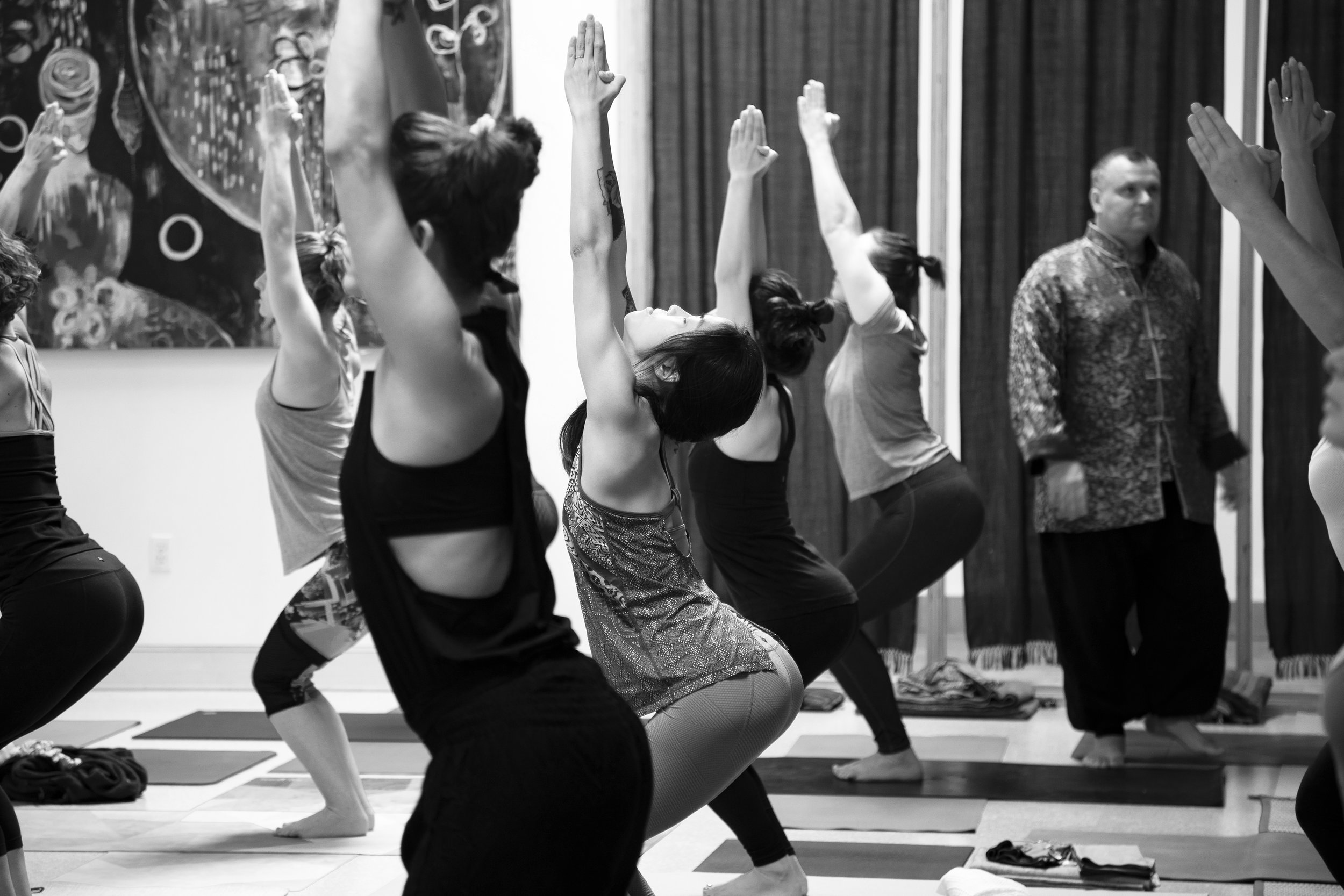Yoga Chitta Vrtti Nirodha
What is Universal Yoga?
Universal Yoga is a multi-faceted system of methods that represent all the essential rules and laws of authentic yoga. Is it not about the creator of the system (Andrey Lappa), nor is it about a particular, specialized direction in yoga. It is about unifying all the methods and disciplines in authentic yoga that can be used for any and all individuals, and for any broad or specific goal.
A typical UY asana class will be oriented around the idea of creating balance on all the layers of self (physical, energetic, emotional and mental) using the three main threads of yoga practice: body, breath, and mind. The asanas, vinyasas, breathing techniques and turns on the mat, are creatively integrated while using all major ranges of mobility for arms, legs and spine. The primary goal of practice is not to target the body, but to target one’s concentration, focus and attention; to turn it all inward, creating a serenely stable inner-atmosphere conducive for awareness & personal development.
Shiva Nata
Synchronizing spiral movements of the limbs with the breath creates a constant and intensive energy consumption from the surrounding space, translation of it through psychic-energy structure channels, and accumulation and radiation into the surrounding space.
Such spiral motions were widely used in early Buddhist practices. Initially these were the elements of the Dance of Shiva, a Yogic art which develops conscious control, coordination and the potential abilities of the body, without specialized application in life.
Mayakoshas - the platform of universal yoga
Universal Yoga is a system based on the idea of the mayakoshas (sheaths of the self) that the physical, energetic, emotional, psychological, intellectual, bliss and karmic layers. The Universal Yoga System teaches the yogic methods that enable any practitioner to create control and balance on each sheath, between the sheaths themselves and between the sheaths of the practitioner and surrounding space (world, environment, other people). There are distinct practices related to each sheath/shell that can be specialized and individuated for any level or practice or any purpose of development.
Four Aspects of UNIVERSAL YOGA
FIRST FEATURE: To be karmically free (7th chakra); to be conscious and responsible for all aspects of practice and life (6th chakra); to be creative in practice (5th chakra); to be compassionate, always (4th chakra)
SECOND FEATURE: Practitioners of Universal Yoga must use the ideas of unification, balance & control to create balance on each sheath (mayakosha), between the sheaths, and between themselves and surrounding space (others). In Universal Yoga there are practices for each sheath that can be individualized according to the needs of each practitioner.
THIRD FEATURE: Universal Yoga practitioners must remember to BE TRUE TO THE ULTIMATE GOAL of YOGA. If the ultimate goal is preserved then yogic knowledge will not be contaminated by personal interpretations, ego-oriented goals or yoga as a business. Each practice on any layer should bring the practitioner to an experience of the next layer.
FOURTH FEATURE: Practitioners of Universal Yoga must follow the traditional concept of the mayakoshas in their teaching and practice. This will prevent any individual approaches from becoming too narrow or too specialized. It will keep the practitioner on the path of TRUE balance in yoga. Once we get to the deepest layers of practice, all individual practices will be different because the karma of each person is different



